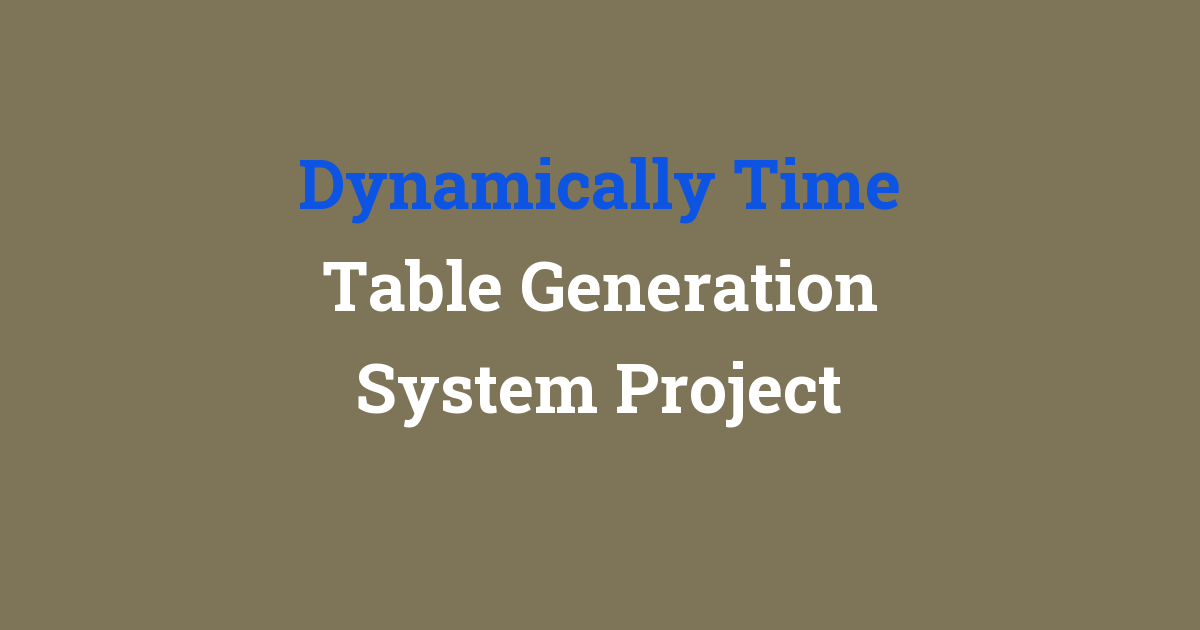Project for developing a dynamic time table generation system.
Introduction:
As a student pursuing a Bachelor of Technology degree in India, one of the major challenges we face is creating a timetable that effectively schedules classes, exams, and other activities. The traditional method of manually creating timetables is time-consuming and often leads to errors. To address this issue, our project focuses on developing a Dynamically Time Table Generation System that automates the process of timetable creation.
Problem Statement:
The current system of timetable generation relies on manual input, which is prone to human errors. This results in scheduling conflicts, overlapping classes, and inefficiencies in resource allocation. Moreover, the static nature of the timetable makes it difficult to accommodate last-minute changes or additions. As a result, students and faculty members often face inconvenience and confusion due to the limitations of the existing system.
Existing System:
In the existing system, timetables are typically created using spreadsheets or specialized software. However, these tools are limited in their ability to adapt to changing requirements and constraints. For instance, when a class is canceled or rescheduled, the entire timetable needs to be manually adjusted, leading to a domino effect of changes. This manual process is not only time-consuming but also error-prone, resulting in frequent conflicts and inconsistencies in the schedule.
Disadvantages:
- Manual input leads to errors in timetable creation.
- Static nature of the timetable limits flexibility and adaptability.
- Last-minute changes are difficult to accommodate.
- Scheduling conflicts and overlapping classes are common.
- Resource allocation is inefficient.
Proposed System:
Our proposed Dynamically Time Table Generation System aims to address the limitations of the existing system by automating the process of timetable creation. The system will use algorithms to generate timetables based on predefined constraints and requirements, ensuring optimal use of resources and minimizing conflicts. Additionally, the system will have the flexibility to accommodate changes in real-time, allowing for last-minute adjustments without disrupting the entire schedule.
Advantages:
- Automated timetable generation reduces errors and inconsistencies.
- Dynamic nature of the system allows for flexibility and adaptability.
- Real-time adjustments enable quick responses to changes or additions.
- Optimal resource allocation leads to efficient use of facilities and faculty.
- Minimized scheduling conflicts result in a smoother academic experience for students and faculty.
Features:
The Dynamically Time Table Generation System will include the following key features:
- Automated timetable generation based on predefined constraints.
- Dynamic updating of the timetable to accommodate changes in real-time.
- Integration with student and faculty databases to streamline scheduling.
- User-friendly interface for easy input and manipulation of timetable data.
- Reporting and analytics tools to track and optimize timetable efficiency.
Conclusion:
In conclusion, the development of a Dynamically Time Table Generation System is a crucial step towards improving the efficiency and effectiveness of scheduling in academic institutions. By automating the process of timetable creation and enabling real-time adjustments, the system will minimize errors, conflicts, and inefficiencies in the schedule. This will not only lead to a smoother academic experience for students and faculty but also optimize the use of resources and facilities. Through the implementation of this project, we aim to revolutionize the way timetables are created and managed, setting a new standard for scheduling systems in the field of education.

